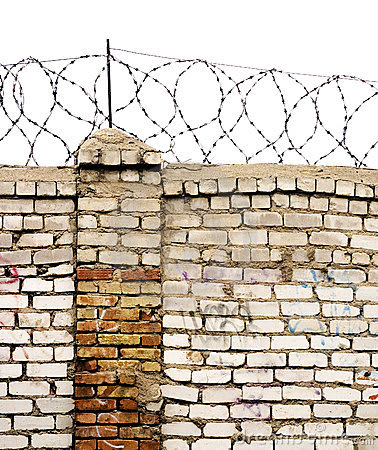
Miriam and Daniel Schwab have grown accustomed to the nightly 4:00 AM blaring that serves as the public summons to prayer for Muslim worshipers early each morning. (In Islam, the tradition is to pray five times daily) Transmitted through loudspeakers, the repeated calls echo through the neighborhood hills and bounce off the buildings into the Schwabs’ apartment. Although they now sleep soundly through the nightly interruption, a visitor might not be so lucky. Then again, the Schwabs have many daily routines that might jar the average visitor.
Their four children play in large courtyards protected by high walls and the family makes one large shopping trip a week—borrowing essentials from neighbors in the interim, rather than risk shopping in the local stores. There is no public transportation in their neighborhood, forcing them to rely on expensive means of private transportation and the creation of special ride-shares to and from their home.
Yet Miriam and Daniel, immigrants from Canada and South Africa respectively, live only one mile away from Jerusalem’s City Hall and less then a half a mile from the Western Wall located in the Old City. In fact, by geographic standards, the center of Jerusalem is only a short 20 minute walk from their home.
Their neighborhood, however, officially located in East Jerusalem, is practically another world for most of Jerusalem’s Jewish residents. With the exception of the 45 families living with them in the walled community, their neighborhood of Ras El-Amud is populated almost exclusively by Israeli-Arabs.
The Jewish complex in which the Schwabs live is known as Ma’aleh Hazeitm (The Mt. Of Olives) and consists of four buildings surrounded by concrete and barbwire. A Palestinian Fatah youth center complete with pictures of the late Arafat is literally a “stone’s throw away.”
The proximity with which Jews and Arabs live together in this neighborhood is more pronounced than in most of the settlements throughout Judea and Samaria. Here there are no gated villages, pizza shops, separate roads or Jewish grocery stores. Jews and Arabs live side by side in a tense calm.
Why would these families choose to live here when they could move one mile away to a less dangerous area with all the comforts and advantages of the Jewish State?
Daniel Schwab directs visitors to the view from his window to answer this question. From his complex, one can clearly see the Temple Mount, (Har HaBayit) site of the first two ancient Jewish temples, considered the holiest place still existing today for Jews . It also happens to be the site of the Al-Asqa mosque (Dome of the Rock) and frequented almost exclusively by Muslims today. Below the Temple Mount sits the Western Wall, one of the last remains of the second temple where Jews from all over the world come to give their most intimate prayers to God.
The site is important for the world’s three major religions and until the Six-Day war was controlled by Jordan who denied access to the Jews. Israel’s victory in the war brought about the miraculous unification of Jerusalem, but their still exists both a symbolic and population divide between the two halves of the city.
With the Jews predominantly living in West Jerusalem and Israeli-Arabs living in East Jerusalem some people believe that East Jerusalem (and with it the Temple Mount) should be the capital of a future Palestinian State. The division of Jerusalem, however, is exactly what families who are living in Ma’aleh Hazeitm hope to prevent from occurring.
“We have to start relating to East Jerusalem as part of the whole of Jerusalem or we are going to lose Har Habayit,” Daniel Schwab emphatically explains. “Everything will survive or fall on the battle for Har Habayit.”
Schwab is not alone in his thinking and today there are plans today to expand the Ma’aleh Hazeitim complex to include another 70 apartments, a mikvah and a synagogue. When the Schwabs moved in at the start of the Second Gulf War, however, they were only one of eight families who had committed to live there. Within three years, the complex had grown to the 45 families that populate it today.
As with many new settlements in Israel, the origins of Ma’aleh Hazeitim were not without controversy. The land was originally purchased in the mid-1800s by learning institutions affiliated with the Chabad and Wollin Chassidim. From the outset, the land was designated to become part of an existing Jewish cemetery, but the Turkish rulers at the time refused to allow the Jews to conduct funerals there.
As a temporary solution up through the outbreak of the War of Independence, the owners rented the land to an Arab farmer who later became embroiled with them over an ownership dispute. The dispute lasted until 1984 when the Israel Supreme Court ruled in favor of the Jewish land owners. Then, in 1990, philanthropist, Dr. Irving Moskowitz purchased the land from the Chabad and Wollin institutions for the purpose of creating a Jewish neighborhood, but it wasn’t until much wrangling that his dream became a reality almost 12 years later.
Many Jerusalemites are still sometimes shocked to learn that Jews actually live on the Mount of Olives today. Despite the fearful reactions the Schwabs occasionally face from visitors, they feel extremely lucky to live in the complex.
“Our children go to school and receive an excellent education in the Old City, the social environment is strong and all of our neighbors are very supportive,” says Miriam. “We have become like a little family.”
Most importantly, the Schwabs believe that they are teaching their children that the inconveniences of living in East Jerusalem are worth the sacrifices.
“We have to talk about the importance of this neighborhood and educate ourselves,” Daniel said. “If there aren’t people physically here, then they could give it away.”
The words of this author reflect his/her own opinions and do not necessarily represent the official position of the Orthodox Union.
